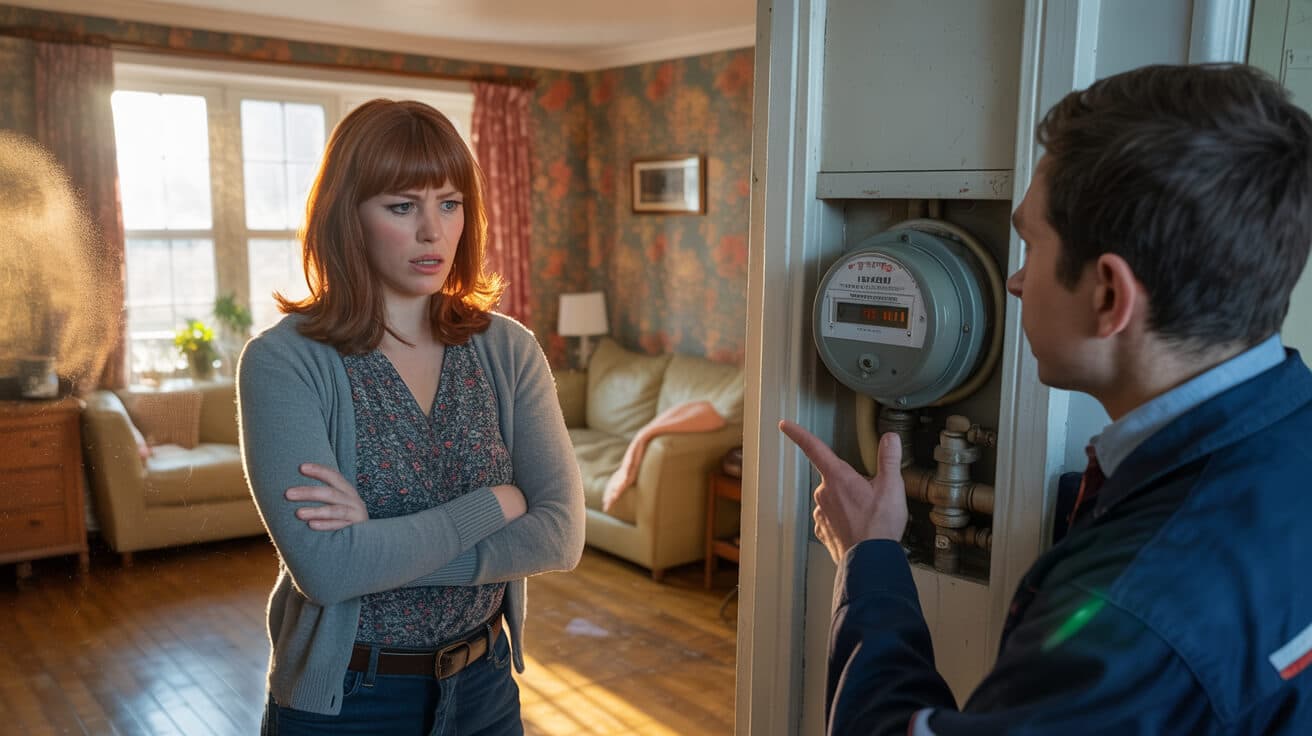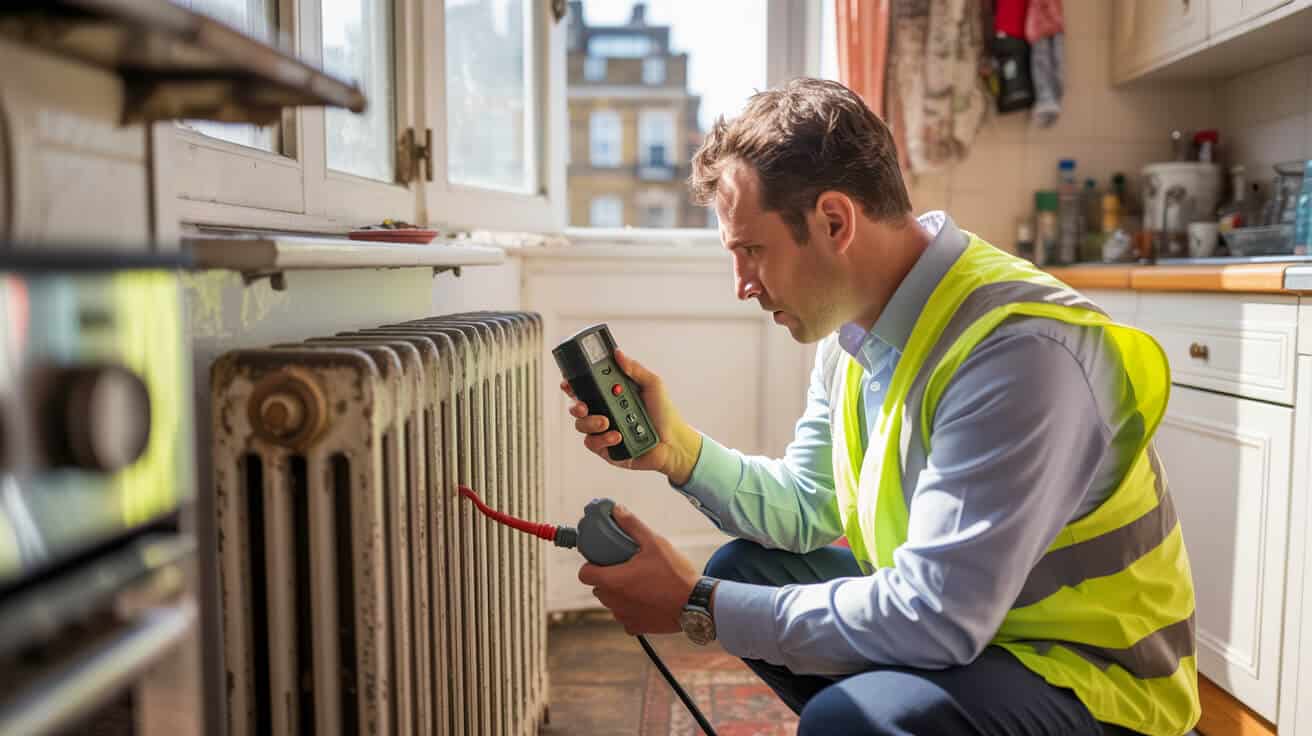 Your Top 10 Questions About Radiators Answered by Experts
Your Top 10 Questions About Radiators Answered by Experts

Why Does the Type of Radiator You Choose Make Such a Difference for Your Property?
Modern heating isn’t just about turning a dial and hoping for the best—it’s a full-blown system that decides your comfort, running costs, and how easily you’ll meet today’s building and rental standards. From family homes to full blocks, the radiator you instal carries weight far beyond looks or size on a wall. Pick the right model, and you get steady warmth, manageable energy bills, and minimal drama on your compliance checks. Pick wrong, and you risk patchy heat, ballooning costs, and headaches every time a letting agent or surveyor reviews your records.
The right radiator pays for itself, quietly, every single winter—while the wrong one chips away at your comfort and budget.
Which Radiator Types Are Available—and Why Should You Care?
Central Heating Radiators (Plumbed):
These are UK’s workhorses—hot water pumped from a boiler runs through robust steel, aluminium, or cast iron panels. They’re simple, reliable, and flexible for zoning and smart controls. Choose these for main homes, rented properties, and commercial spaces tied to a central heating circuit.
Electric Radiators:
Great for garden offices, top floor conversions, or anywhere you can’t easily plumb. Installation is quick, but running costs edge higher, especially as energy tariffs change. They’re best reserved for spaces you use intermittently, or during upgrades.
Dual-Fuel Radiators:
King of the bathroom, these use central heating in winter and switch to electric for those April mornings (or awkward cold snaps). They keep you flexible and your towels toasty, but require safe wiring and the right controls.
Does the Engineer or the Brand Matter More?
Bottom line, it’s the engineer’s credentials—WRAS, WaterSafe, G3 certification—plus their instal log, that back you legally and practically. Fancy brands might look sharp but can fail to meet the UK’s water and safety regs. Every radiator should come with installation details and a job sheet—no matter the sticker price.
Summary Table: Radiator Types and Pros/Cons
Before you decide, here’s how features line up:
| Type | Best For | Key Advantages |
|---|---|---|
| Central Heating | Main properties | Efficient, future-ready |
| Electric | Lofts/garden | Easy, flexible instal |
| Dual-Fuel | Bathrooms/spare | All-season comfort |
A WRAS-approved engineer gets this match right the first time—no guesswork, no failed inspections later on.
How Do You Avoid Guesswork When Sizing a Radiator—and Why Does It Matter?

Proper sizing is the difference between “warm everywhere” and that odd, unlivable draughty corner. Too small, and you end up paying for heat that never arrives. Too big, and you’re bleeding energy and overloading the boiler. Most important: bad sizing will flag your EPC, trip up compliance, and expose you if a tenant complains—or when you try to sell or re-let.
Scientific sizing isn’t overkill—it locks in comfort, keeps boilers happy, and ticks every compliance box.
How Do Professionals Size Your Radiators?
1. Volume and BTU Needs:
Expert installers start with room dimensions (length × width × height), then multiply by a factor tied to insulation and window area (the ‘BTU calculator’). Add for corner rooms or spaces with high ceilings, and subtract for new-build insulation.
2. Environmental Check:
A good engineer checks wall exposures, glazing, stacked floors, even room usage—kitchens need less, open-plan lounges need more. This is not a quick online chart. It’s live, on-site, and tailored.
3. Compliance Documentation:
British Standards (BS6700, Water Regs, Part G) demand you log those numbers. Failing to document the “why” behind your radiator picks can make a claim or audit a nightmare down the road.
What Happens If Sizing Goes Wrong?
- *Comfort*: Owners notice “cold corners” or rooms nobody wants to use.
- *Compliance*: Missing sizing records mean awkward questions during an EPC or Gas Safe inspection.
- *Cost*: Boilers run longer or fail sooner; energy use creeps up invisibly.
Tip: Always ask for your installation or maintenance report—and file it for future reference.
Are “Designer Brands” Worth It, or Is Proven Compliance All That Matters for Radiators?

It’s normal to be tempted by fancy radiators. Shiny anthracite, slick columns, colour pops… They’re everywhere now, pitched as “investment pieces.” But none of that matters if they aren’t up to code. UK regulations, insurance, and lease agreements still want WRAS-approval, legitimate part numbers, and editable service logs. Anything less can void your warranty—or leave you unable to claim after water escape, leaks, or a failed rental inspection.
Overspending on fashion radiators but skimping on compliance is burning your budget twice—first at checkout, then if there’s ever a leak or audit.
What Paperwork Actually Protects You?
- WRAS and WaterSafe Approval: Non-negotiable. Only these radiators guarantee compatibility with UK water systems and landlord requirements.
- Certified Engineer Instal: The engineer’s badge on the paperwork matters more than a designer label. Always check for valid credentials.
- Proof of Fittings: Keep invoice copies and part numbers—managers, agents, and landlords must have these to verify repairs, especially if properties are inspected or audited.
When in Doubt—Store Everything.
Tenant complaints, claims, or legal challenges are all solved fastest by showing a signed job log and parts checklist.
Do Inconsistent Temperatures Signal a Radiator Fault—or System-Wide Problem?

When you run your hand along a radiator and find cold patches, don’t assume the problem is in the panel itself. Most “dead zones” point upstream—air, scale, or sludge blocking heat flow. And tackling these early means less wasted gas, fewer angry tenants, and longer asset life.
A radiator that’s hot at the bottom and cold at the top wastes up to *a third* of the system’s efficiency—and fixing it is cheaper the sooner you get eyes on.
Key Causes and How to Diagnose at a Glance
- Trapped Air: The classic, most often solved by safe bleeding. But if air keeps returning, it’s a hint of a system leak or an incorrect filling process.
- Sludge/Scale: Rust, limescale, and black sludge gather at the bottom. Owners and agents often notice the room grows colder over months, not days.
- Valve or Pump Trouble: Faulty thermostatic or balancing valves can starve a radiator while letting others overheat; pressure issues after a system refill can impact the highest radiators first.
Simple Diagnostic:
Keep a diary of which radiators struggle, when you last bled them, and promised follow-up. Pass this history to your engineer—it’s your ticket to faster diagnosis and a warranty-legal repair.
What Do Noises Like Gurgling, Banging, or Clicking Tell You About Your Radiators?

If your heating system talks back, something deeper is causing the conversation. Every odd sound is a storey: simple (air), fixable (loose clip), or urgent (rogue pressure or failing valve). The trick isn’t to fret, but to log and act early—so fixes stay cheap and future visits don’t double the hassle.
Heating noises left unchecked can turn a simple service call into multi-room repairs. Log issues before trouble snowballs.
Decode Common Radiator Noises
- Gurgling/Hissing: Air trapped after a refill or poor top-up routine. Quick to solve, but if the noise comes back, don’t just keep bleeding. Call a pro.
- Banging/Water Hammer: Caused by pipes moving against joists, poorly set valves, or pressure imbalances. This shakes the whole system and can damage more than just the pipes.
- Ticking/Clicks: Metal expands or contracts, especially after turning off the heat. This often resolves itself—but pipe clips or pads can silence repeat offenders.
Logging Fixes Keeps You in the Clear:
After any “fix,” add a line to your service log—engineer’s note, date, change made. A full record heads off legal squabbles or insurance pushback if problems return.
Can Tenants or Owners Bleed, Repair, or Replace Radiators Themselves Safely?

Bleeding is often held up as “always DIY”—but there’s a crucial difference between open-vented and pressurised systems. Getting it wrong can cost you more than heat.
When Is Bleeding or Repair Safe for a Non-Engineer?
- Open-Vented Systems: Usually safe for owners to bleed—they typically have a header tank in the loft. Always wait for the system to cool.
- Sealed/Pressurised/Unvented Systems: Call in a G3 or WRAS/CIPHE-qualified engineer. Bleeding without the right skills can drop system pressure, create leaks, or disable key safety features.
- Never Touch:
- Anything that involves full drain downs, inhibitor or chemical treatments, or system flushes.
- Repairs behind walls or to unlabelled systems—these can void warranty and land you with non-compliance bills.
- If you’re not sure, don’t risk a fine, warranty void, or a future insurance headache.
Compliance isn’t just paperwork—it’s the difference between fast claims and months of chasing with insurers or regulators.
How Does Professional Maintenance Make Properties Cheaper, Safer, and Easier to Run?

Systematic, signed-off radiator maintenance saves you twice—fewer breakdowns and proof of care for every inspection, claim, and property sale. The savings add up, not just on gas but on time, regulatory stress, and resale value.
What Does Proper Maintenance Actually Include?
- Annual Bleeds and Balancing: Ensures full output—no cold rooms, no overworked boilers.
- Inhibitor Dosing: Keeps sludge and scale at bay. Your engineer should check and top up before every winter.
- TRV (Thermostatic Radiator Valve) and Smart Control Checks: Sharpen zone control, curb wasted energy, and keep tenants happy.
- Full Documentation: Every service leaves a paper or digital trail—date, engineer, visual logs, before/after images.
Landlords, attach these reports to tenancy files. letting agents, store by property and hand to contractors at renewals. Homeowners, keep for sales or to challenge any warranty issues.
Properties logging every service fetch better prices—and escape the time sink of missing paperwork or compliance checks.
Why Do Owners, Landlords, and Agents Rely on Plumbers 4U for Radiator Repairs and Compliance?

Choosing a heating engineer isn’t a gamble—it’s risk management. Plumbers 4U’s WRAS, WaterSafe, and G3-qualified professionals don’t just turn spanners; they record every decision and fix in real-time, with the right paperwork for any audit, handover, or emergency. Everything is scoped, tested, photo-documented, and explained before you pay—protecting owners, agents, and tenants with absolute clarity.
The Plumbers 4U Difference
- Same-Day Response: Fully ID’d, certified engineers. Arrive on time, explain findings, and leave no mess.
- Transparent Quotes: See every line before work starts—no surprises. WRAS and WaterSafe parts only.
- Upgrade Ready: Engineers advise on future-proofing at every step—compliance in mind, not just quick fixes.
- Full Paper Trail: Get digital or hard copy job sheets, before/after photos, and branded sign-off for every job.
- Aftercare and Reminders: Pre-winter checks and servicing offers, so you’re never left scrambling.
Landlords and managers—drop our job sheets straight into your compliance files. Homeowners—rest easy knowing every repair boosts your asset and lowers future stress.
A logged, certified radiator fix from Plumbers 4U holds up under any inspection—compliance and comfort, sorted for good.
Focus on your property’s value, not its vulnerabilities. Call Plumbers 4U next time and get real-world heating solutions plus compliance peace of mind that lasts.
🚰
Frequently Asked Questions
Who is responsible for choosing the right radiator, and how does this affect property compliance and day-to-day comfort?
Selecting a new radiator isn’t just about heating a room—your choice directly impacts regulatory compliance, running costs, and your experience of comfort well into the future.
Whether you’re a homeowner, landlord, letting agent, or managing a commercial space, the responsibility for specification and installation lies with you, but it pays to defer to a seasoned engineer. Small shortcuts often lead to oversized bills or failed audits. Central heating radiators, when expertly connected to a boiler or heat pump, tick every regulatory box from Part G to WRAS and are the go-to for most homes and offices with existing pipework. Electric radiators offer plug-and-play simplicity for extensions and conversions but trade lower instal difficulty for higher long-term energy costs and may weaken your EPC score if overused. Dual-fuel models—ideal for bathrooms and seasonal annexe spaces—deliver all-season flexibility but mandate certified plumbing and electrical installation, with certified documentation to keep insurers and letting agents happy.
| Radiator Type | Where They Shine | Compliance Factor |
|---|---|---|
| Central Heating | Main homes, most offices | Satisfies all UK water/heating regs |
| Electric | Retrofits, garden rooms | Fast instal, but cost and EPC watch |
| Dual-Fuel | Bathrooms, annexes | Demands dual (plumbing & electric) sign‑off |
One good radiator choice secures years of comfort; a bad one costs, recurs, and reminds—every season, every audit.
Plumbers 4U engineers don’t just “fit radiators”—they weigh up each space, compliance path, and future comfort, down to the make and model, reporting every instal for warranty and audit continuity. Cross-reference our comparison guide to see real-world comfort in action.
Why regulatory sign-off is a dealmaker for landlords and managers
Installations by certified engineers lock in insurance cover, future claim eligibility, and can make or break rental or resale value. Lapses may force costly reworks to pass new audits or EPC upgrades.
What factors trump unit price for asset managers?
- Planning or heritage restrictions
- Site-wide pressure, zoning, and control strategies
- Survey feedback from everyone who lived or worked through a winter in the property
How do you accurately size a radiator for room comfort and legal compliance?
Pinpoint sizing starts with precise maths, not guesswork—you want radiators that heat efficiently, audit properly, and keep all users satisfied year-round.
A BTU (British Thermal Unit) assessment lies at the heart of every legal and practical decision. The room’s length × width × height (in metres) multiplies by a BTU factor: 40–50 for new/insulated, 50–70 for older/draughty stock. Remedying cold spots with a larger radiator afterwards costs more than getting it right first go. Rooms with extra glass, subpar insulation, or north-facing walls often need an extra boost. Oversized units risk stuffy rooms and higher bills; undersized means “icebox” complaints and EPC headaches.
| Room Type | BTU Range | Key Sizing Note |
|---|---|---|
| Bathroom | 1,000–2,000 | Higher factor for rapid heat-up |
| Double Bedroom | 2,500–4,000 | Size for winter, avoid oversizing |
| Lounge/Studio | 6,000–10,000 | Prioritise zoning for even warmth |
Engineers use British Standard calculations on every job. Certification isn’t red tape—it’s what keeps your property complaint-proof for years.
Our certified teams document room-by-room recommendations for landlords and surveyors, plugging instal data into EPC filings or letting portals.
Why function and use-case change how you size
Fast-cooling spaces like tiled kitchens or bathrooms require extra. Living zones crave even warmth; bedrooms need control to avoid “sauna syndrome.” Final balancing after instal is essential for consistent results.
How digital tools speed compliance and future audits
Smart BTU calculators, used by professionals, provide auditable logs and future proofs for managed portfolios or block managers—use them now, not once something’s gone wrong.
Why do radiators get cold spots—and what actions stop bigger problems down the line?
A cold spot is more than an annoyance—it’s an alarm bell for breakdowns, inefficiency, and compliance risk. Typically, top-cold means trapped air: easy to bleed if caught early. Cold at the bottom shouts “system sludge”: limescale, rust, or debris has crept in, handicap heating, and stresses boilers.
- Top cold, bottom hot: Power off, bleed with a radiator key until water flows cleanly.
- Bottom cold or patchy panel: System flush time. Only trained engineers should handle the chemicals and the mess—DIY can worsen leaks or corrode valves.
Letting cold spots slide compounds costs, feeds the “repair cycle,” and leaves logbooks full of unresolved call-outs—not a look that impresses insurers, tenants, or buyers.
| Issue | Immediate Fix | Risk If Ignored |
|---|---|---|
| Top cold | Bleed panel | Energy waste, quick tenant fix |
| Bottom cold | Engineer/system flush | Higher bills, audit fails, breakdowns |
| Patchy heat | Full survey | Insurer red flag, costly repairs |
Ignore a cold spot and it turns into a claim, a quibble, and a cost. Sort now, win later.
Plumbers 4U logs before/after heat signatures on every remedial—insurance, EPC, and comfort all stay on your side.
How planned maintenance blocks disaster
Annual “system chemistry” (inhibitor dosing), philtre swaps, and certified circulation checks kill cold spots before they start. Landlords and agents: bundle these into every maintenance schedule.
When tenant feedback means act, not reassure
Consistent cold rooms, slow warm-ups, or patchy panels are always a prompt for professional survey—never just “see if it goes away.”
When can you fix radiator noises yourself, and when is an engineer a must?
Every system knocks, ticks, or gurgles at times—reading the signs is key to avoiding bigger bills, leaks, or even compliance breaches. Light ticking as heat comes on is normal and fades. Gurgling? A careful bleed (when cold) often solves it.
But if you hear banging (“water hammer”), grinding, or hissing alongside leaks, that’s engineer territory—especially if pipes are hidden, pressure is high, or you’ve got smart controls in play. Don’t risk system lockout (or a burst pipe) by guessing.
- Safe for DIY: Occasional tick/gurgle, no leaks
- Must escalate: Hammer, loud clank, or noise after major system changes
| Noise Type | DIY Addressable | Engineer Needed | Why |
|---|---|---|---|
| Light gurgle/tick | Yes | No | Common; solved by bleeding |
| Banging/hammer | No | Yes | System pressure, pipe, config risk |
| Persistent hiss | No | Yes | Pressure/leak, safety & compliance |
| After system change | No | Yes | Zoning error, new controller fault |
Act early: one ignored noise can void warranties, slow compliance, or trigger insurance foot-drag.
Plumbers 4U service logs and digital photos create a clear compliance trail for future audits and claim swaps.
What do long-running noises really signal?
Chronic sounds forecast circuit blockages (“dead legs”) or air issues. Untreated, these drain efficiency and spike repair costs. A survey pays for itself in both savings and a solid audit file.
Modern controls bring new quirks and responsibilities
smart thermostats, wireless zoning, and modern extensions introduce new noise risks. A post-upgrade check-in with an accredited engineer prevents ongoing asset value slip.
How do you safely bleed and maintain radiators—without creating bigger or more expensive issues?
Bleeding is simple if you know the rules; dangerous if not—wrong tool or skipped step and you risk leaks, failed pressure, or a voided warranty.
Best practice:
- Switch heating fully off and let radiators cool.
- Protect nearby flooring and have a bowl ready under the valve.
- Use a correct radiator key—slowly open until air gives way to water and close tight.
- Top up boiler pressure (1–1.5 bar is standard).
- Always log the date, action, and room—bonus points for a quick snap for your records.
Major warnings:
- Only attempt on older, open-vented systems unless fully confident.
- Never bleed, drain, or flush smart or pressurised systems without system diagrams or digital sign-off—it’s a fast route to a flood or lockout.
- Chemical flushes and system balancing are pro-only—touch these and you risk audit/insurance problems.
Documentation is as important as the fix—the best landlords have a photo and a log for every tweak.
Plumbers 4U’s aftercare protocol covers documentation, digital logs, and maintenance tips—protection for your asset, your claims, and your peace of mind.
Are you using app prompts and logbooks properly?
Many newer homes alert for bleeds or service. Always note in digital logs and keep backup; future audits rely on this chain of actions, not just a happy tenant.
Why even small maintenance lapses can escalate
Failing to file a maintenance event is a top cause of insurance or regulatory claim headaches. We make it easy to export your log for every engineer visit.
Which radiator services must only be done by certified professionals—and what are the real consequences for asset value?
Routine tweaks can be handled by hands-on owners or site supervisors, but the law (and every warranty) draws firm limits: once pressurised systems, unvented cylinders, or built-in upgrades come up, only WRAS, G3, or WaterSafe engineers count.
Go pro for:
- Any work on pressurised/unvented cylinders (G3 required)
- Whole‑system chemical flushes or inhibitor top‑ups
- Changes to hidden or embedded pipework
- New instal or smart upgrade sign‑off (EPC, insurance, letting legalities)
- Any paperwork tied to future insurance or audit
DIY where safe:
- Bleeds on old open-vented systems, if you’re confident and can monitor pressure
- Small valve re‑tightens, provided no high-pressure or electrical involvement
| Task | DIY Allowed | Engineer Only | Reason |
|---|---|---|---|
| Bleed, open-vented | Yes | No | Monitor, log, restore pressure |
| Instal, upgrade, or zone | No | Yes | All require compliant certification |
| Chemical work, inhibitor dosing | No | Yes | Chemical hazard, logs, legal |
| Structural pipe repair | No | Yes | Leak/compliance risk |
| Documented service/audit | No | Yes | Needed for claim, EPC, audit |
The paperwork you skip today is the audit obstacle, claim denial, or sale snag you’ll face tomorrow.
Every Plumbers 4U engineer delivers before/after photos, logs, and credential scans for landlord, tenant, and agent download—making future claims seamless.
How missing paperwork erodes value and legal integrity
Insurers and regulatory bodies need sign-off in black and white. DIY or unlogged work cancels cover, triggers delays, and marks down your asset value.
How does a complete maintenance file give you audit advantage?
Centralise invoices, digital service notes, engineer credentials, and recommendations. This simple, habit reduces risks, accelerates claims, and helps ensure you stay ahead of legal shifts.
Plumbers 4U backs every instal, upgrade, or repair with certified expertise, transparent compliance, and user-friendly records—helping landlords, agents, and owners secure both comfort and long-term value.

